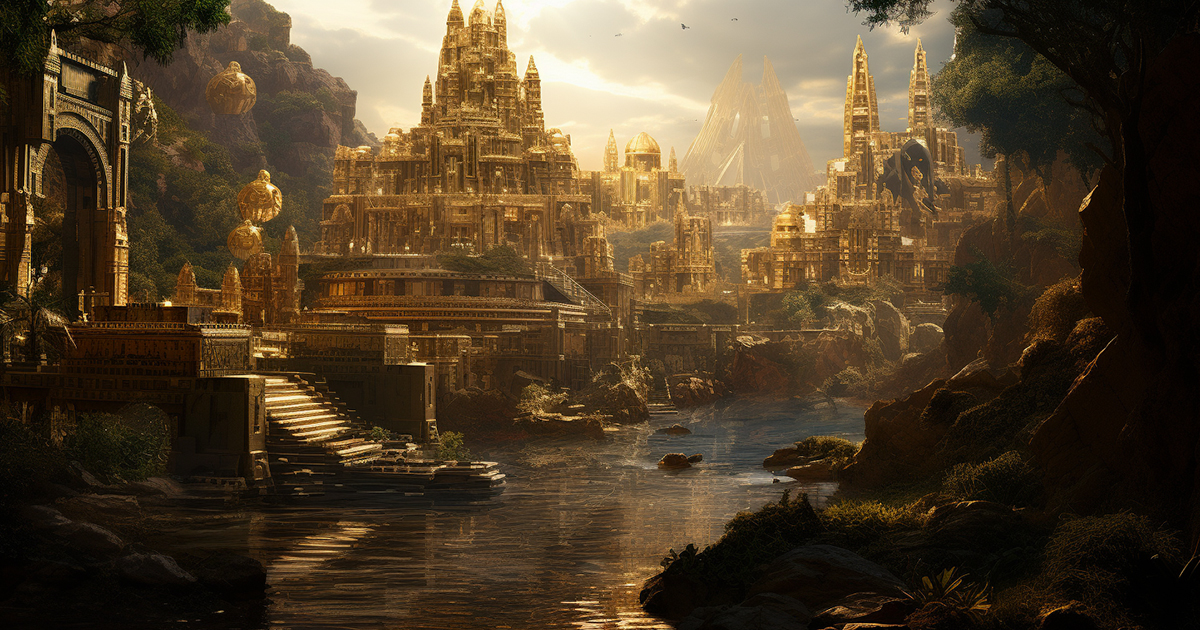During the early 16th century, the globe was an expanse of uncharted territories, ripe with possibilities and enigmas awaiting revelations. Among those who ventured out in quest of undisclosed treasures were the Spanish conquistadors, possessed by a singular fixation: gold.
It was the year 1532 when the conquistadors, under the leadership of Francisco Pizarro, embarked on a hazardous expedition to conquer the New World and seize whatever gold they could lay their hands on.
The pursuit of gold transcended mere desire for affluence; it evolved into an all-consuming passion that galvanized their every action. Venturing into the core of South America, they were met with a spectacle that ignited their fantasies.
The indigenous populations, adorned with golden opulence, triggered an unparalleled zeal among the Spanish explorers that surpassed any experience in Europe.
Lurid tales began to spread, narrating stories of a splendid city crafted entirely from gold. In their limitless fascination, the Spanish christened this legendary place as El Dorado, a simple translation meaning “the golden.”
This name became emblematic, symbolizing not only their pursuit of prosperity but also the enigmatic aura enveloping the legendary city.
The conquistadors, propelled by avarice and inquisitiveness, delved deeper into the uncharted territories. They navigated through dense rainforests, traversed swollen rivers, and scaled icy peaks in their relentless search for what they believed to be a concealed city overflowing with unimaginable riches.

Amid escalating accounts of El Dorado, a notion began to take root that perhaps it was more than a mere myth.
The notion of El Dorado as a genuine, lost city of gold surged in credibility as the Spanish encountered the enigmatic muiska people. These indigenous inhabitants resided in the Andean highlands, now encompassing modern-day Colombia.
The muiska civilization prospered for over a millennium, originating in 600 A.D., and wielded a formidable influence, rivaling even the renowned empires of the era, such as the Inca.
One of the most persuasive proofs supporting the existence of El Dorado emanated from the muiska people themselves. They displayed masterful artistry in working gold, crafting intricate gold pieces with astounding finesse.
Delicately hammered gold was fashioned into exquisite representations of fauna and deities, reflecting the profound relationship of the muiska with the precious metal.
The pivotal moment for the conquistadors surfaced when they learned of a distinct ritual conducted by the muiska high up in the mountains at a location known as Lake Guatavita. In this ceremonial act, a newly appointed leader would cloak himself in a dusting of gold, embarking on a raft accompanied by priests.
A stash of offerings, including gold and jewels, lay at his feet. As the raft drifted to the lake’s center, the leader would cast these treasures into the water, plunging in himself to relinquish the gold dust.
For the Spanish, this ritual hinted at the existence of El Dorado, the elusive city they had been fervently pursuing. They hypothesized that this rite had been practiced for generations by the muiska, suggesting that an ancient city must safeguard the immense gold reserves utilized in these sacred ceremonies.
As the conquistadors persisted in their quest for El Dorado, they indeed stumbled upon gold—exquisite gold creations fashioned by the muiska people. These revelations tantalized their imaginations, persuading them that more opulence awaited just beyond their reach.
Watch the Video:
Nevertheless, despite their unwavering endeavors, the genuine El Dorado remained elusive, forever intertwined with the mystique of the unexplored and the appeal of the unknown.
In the chronicles of history, the quest for El Dorado serves as a testament to humanity’s insatiable craving for exploration, wealth, and the intriguing treasures concealed within the heart of uncharted frontiers.
